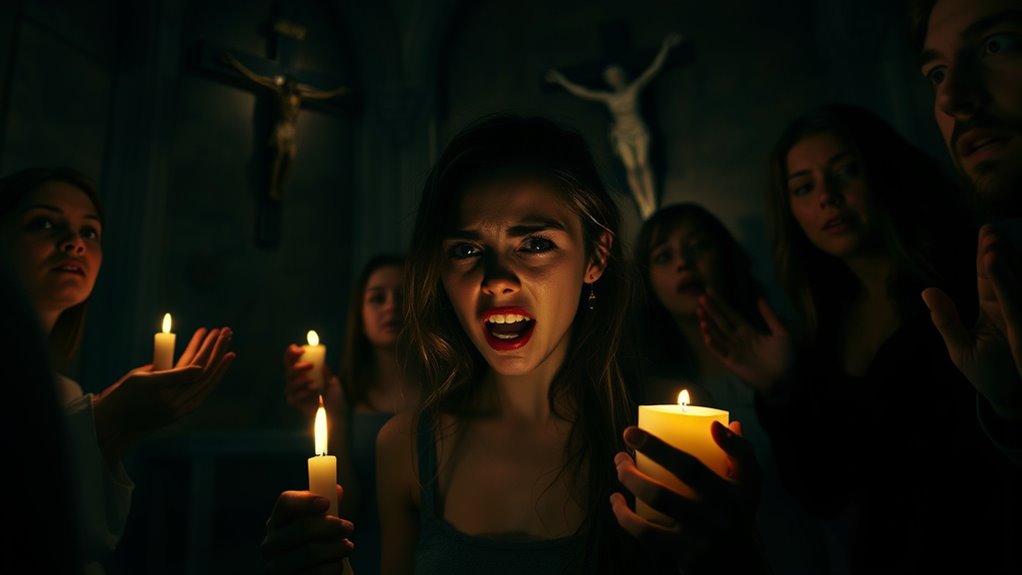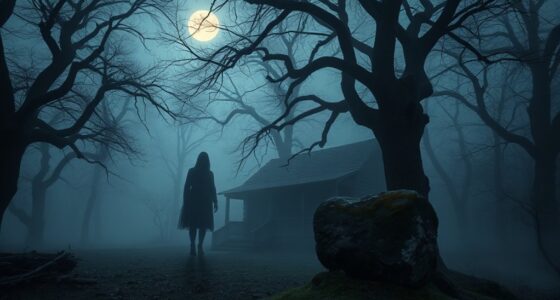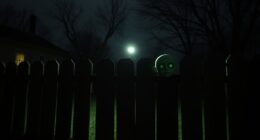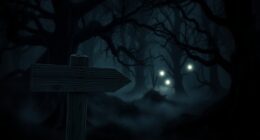Anneliese Michel’s story is a tragic blend of mental illness and religious fervor. Diagnosed with temporal lobe epilepsy, her symptoms were misinterpreted as demonic possession. Instead of receiving medical care, she underwent 67 grueling exorcisms that ignored her clear health needs. This heartbreaking neglect led to her death from starvation and dehydration. The case raises important questions about faith versus mental health. There’s much more to uncover about her life, the trial, and its lasting impact.
Key Takeaways
- Anneliese Michel’s case highlights the tragic consequences of ignoring mental health issues in favor of spiritual explanations for her symptoms.
- The intense exorcism sessions, totaling 67, neglected her medical needs, ultimately leading to her death from starvation and dehydration.
- Legal proceedings revealed the tension between faith and medical care, with priests convicted of negligent homicide for their role in her decline.
- The case has sparked discussions on the importance of distinguishing between mental illness and demonic possession, emphasizing the need for medical intervention.
- Anneliese’s story serves as a cautionary tale, illustrating the dangers of allowing spiritual beliefs to overshadow necessary psychological treatment.
Anneliese Michel’s Unusual Upbringing and First Troubling Diagnosis
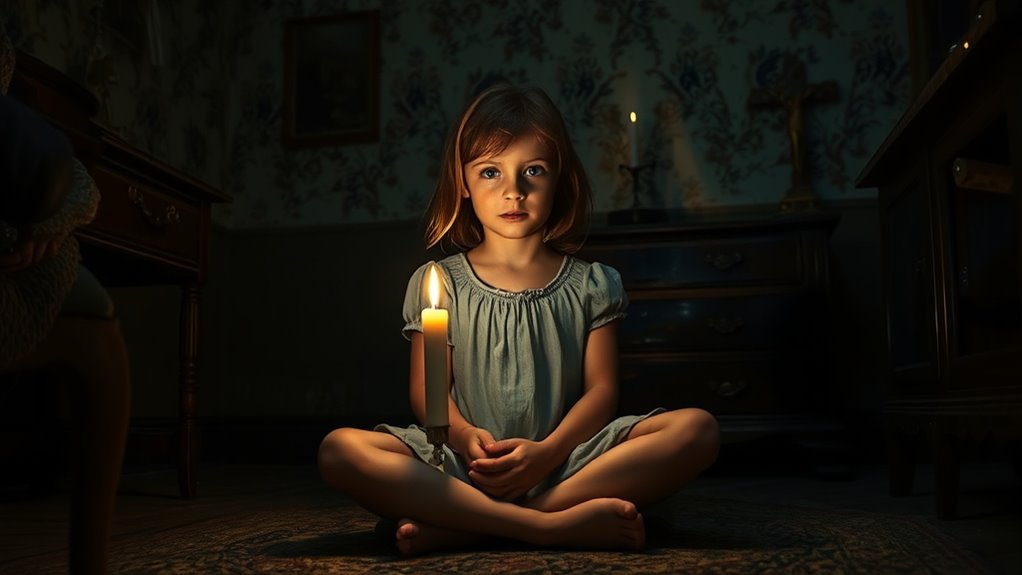
Anneliese Michel’s upbringing was steeped in devout Catholicism, which shaped her worldview from an early age. Growing up in Bavaria, West Germany, she attended mass twice a week and embraced her faith, laying the groundwork for her later beliefs.
At just 16, Anneliese experienced her first convulsion and was diagnosed with epilepsy, specifically temporal lobe epilepsy. This condition not only caused seizures but also intensified her hyperreligiosity.
Despite medication, her symptoms persisted, leading her to seek help from priests, convinced she was possessed. You might find it troubling that her unusual behaviors, like crawling under tables and ripping clothes, were interpreted as signs of demonic influence, reflecting how her strong religious upbringing influenced her understanding of her condition.
The Strange Behavior of the Girl Possessed by a Demon
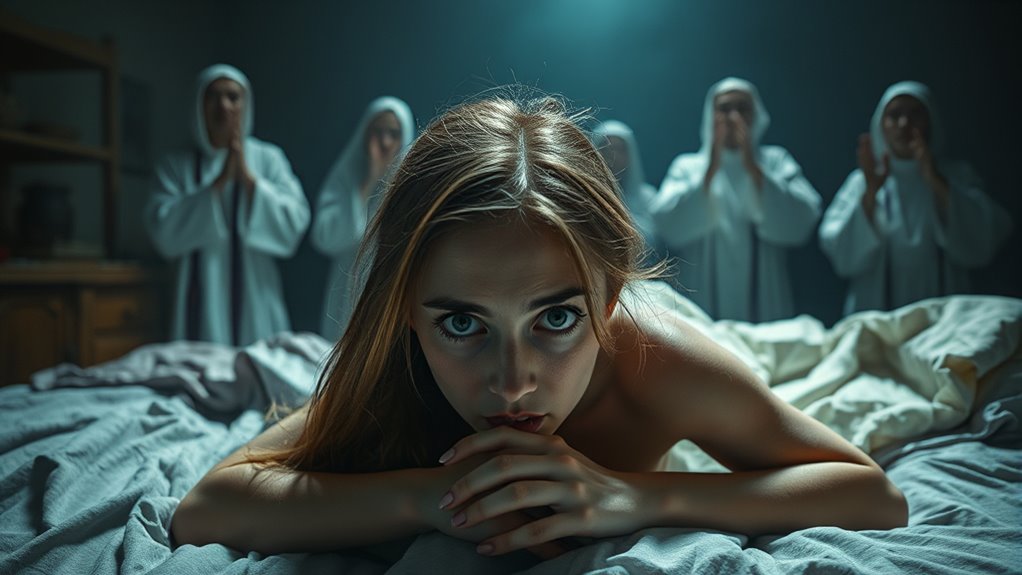
You can’t help but notice the bizarre behaviors Anneliese Michel exhibited during her possession.
From her alarming strength to the haunting hallucinations and self-harming actions, each incident raises unsettling questions.
As we explore these strange manifestations, the line between demonic influence and mental illness blurs even further.
Unexplained Physical Strength
The extraordinary physical strength displayed during the exorcisms of Anneliese Michel has baffled both witnesses and experts alike.
Her unexplained physical strength was evident in several alarming ways, leading many to believe she was indeed possessed by demons.
- She jumped to extraordinary heights, evading restraint.
- Witnesses noted her ability to lift heavy objects effortlessly.
- Her extreme actions included crawling under tables and ripping her clothes.
- Intense confrontations with priests highlighted her violent outbursts during exorcism sessions.
This unusual endurance and strength during the exorcisms raised questions about her mental state, but many attributed it solely to demonic influence.
Anneliese’s physical capabilities during this harrowing time have left a lasting impression on those who witnessed them.
Hallucinations and Visions
Witnesses of Anneliese Michel‘s exorcisms observed not only her extraordinary physical strength but also troubling hallucinations and visions that contributed to the belief in her demonic possession.
She vividly described encounters with demons, claiming to be possessed by six, including Lucifer and Adolf Hitler. Anneliese crawled under tables, ripped her clothes, and consumed non-food items, believing these behaviors were symptoms of her possession.
Her hallucinations intensified during the 67 exorcism sessions, leading to severe convulsions and hyperreligiosity. Instead of seeking medical help for her epilepsy, she interpreted it as demonic influence.
Sadly, this prolonged ordeal culminated in her tragic death, leaving many to grapple with the realities of mental illness versus the idea of demonic possession.
Self-Harming Behaviors
While grappling with her belief in possession, Anneliese Michel engaged in alarming self-harming behaviors that highlighted her deteriorating mental state. Her actions grew increasingly bizarre, often ignored by those around her.
- She ripped her clothes and performed squats obsessively.
- Anneliese crawled under tables, further illustrating her distress.
- She consumed non-food items like spiders and coal, showing severe malnutrition and dehydration.
- Violent outbursts, filled with screams and curses, were seen as signs of demonic possession.
Tragically, her mental health issues, including epilepsy and manic depressive psychosis, were overlooked. The culmination of her self-harming behaviors led to her death after enduring 67 exorcisms, a heartbreaking end to a life overshadowed by misunderstood struggles.
How Anneliese Michel Was Subjected to Torturous Exorcisms
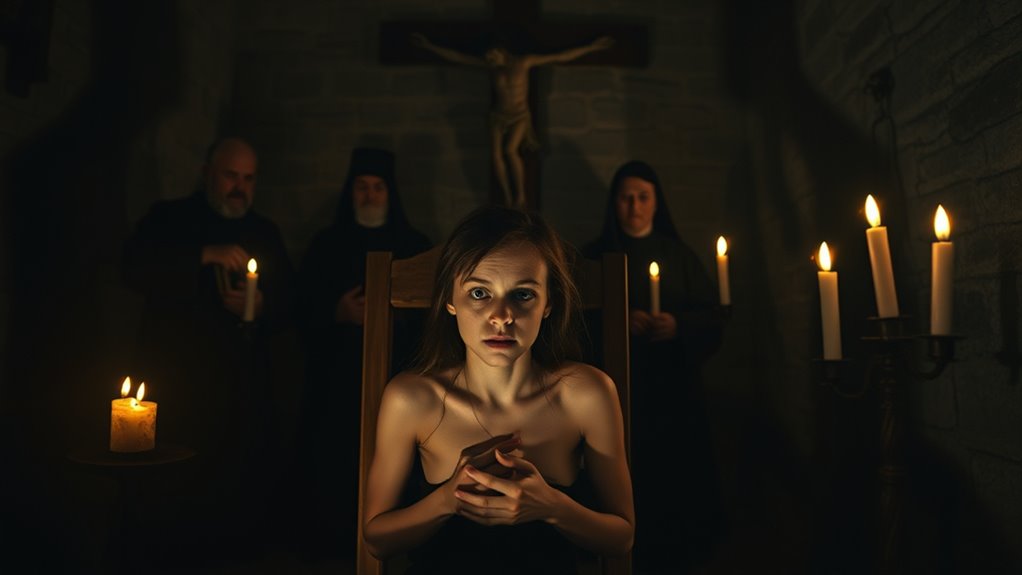
You can see how Anneliese Michel’s experience became a harrowing ordeal through the lengthy exorcism sessions that lasted hours.
As her physical and emotional distress mounted, her serious medical conditions went ignored, leaving her vulnerable.
This tragic combination ultimately led to devastating consequences that no one could have foreseen.
Physical and Emotional Distress
Anneliese Michel endured a harrowing ordeal as she was subjected to 67 exorcisms over ten months, each lasting up to four hours.
During these sessions, you’d witness her extreme physical and emotional distress, marked by:
- Self-harming behaviors and consuming non-food items
- Significant weight loss, dropping to only 66 pounds
- Violent actions like ripping her clothes and crawling under tables
- Psychological torment from the belief she was possessed
Instead of addressing her diagnosed conditions like temporal lobe epilepsy, the priests ignored her medical needs, ultimately worsening her situation.
Anneliese’s suffering was amplified by the chaotic environment created by the exorcisms, where her physical and emotional pain went tragically unrecognized.
Ignored Medical Conditions
The harrowing experience of Anneliese Michel was compounded by a critical oversight: her medical conditions were largely ignored.
Diagnosed with temporal lobe epilepsy at 16, her symptoms—seizures and hallucinations—were misinterpreted as possession. Instead of seeking further medical help, her family and priests supported this belief, allowing her condition to worsen.
Anneliese’s story reflects a tragic demise fueled by neglect. During her ten-month ordeal, she underwent 67 exorcisms while her health deteriorated, leading to self-harm and severe malnutrition.
Her mental health struggles were dismissed as demonic influence rather than addressed as psychiatric disorders. Legal proceedings posthumously revealed the failure to provide necessary medical assistance, highlighting the dire consequences of ignoring her medical conditions.
Lengthy Exorcism Sessions
While grappling with her severe mental and physical decline, Anneliese Michel endured an astonishing 67 exorcism sessions over ten months, each lasting up to four hours.
These lengthy exorcism sessions took a devastating toll on her health, as the priests ignored her clear medical needs.
- Anneliese claimed possession by six demons, including Lucifer and Cain.
- She exhibited extreme behaviors, like ripping her clothes and crawling under tables.
- The priests attributed her suffering to spiritual causes, neglecting signs of malnutrition.
Her death, resulting from starvation and dehydration, raised serious ethical concerns about negligent homicide.
Ultimately, the rigorous approach to her supposed possession led to tragic consequences, leaving many to question the morality of such practices.
The Causes and Circumstances of Anneliese Michel’s Death

Despite being diagnosed with temporal lobe epilepsy and manic depressive psychosis, Anneliese Michel’s condition deteriorated after her symptoms were misinterpreted as demonic possession.
Over ten months, she underwent 67 grueling exorcism sessions, leading to severe malnutrition and dehydration. By the time of her death on July 1, 1976, Anneliese weighed only 66 pounds and suffered from multiple broken bones and pneumonia, clear indicators of her physical decline.
Tragically, her parents and the priests involved failed to seek appropriate medical care, resulting in a legal ruling of negligent homicide.
The refusal to pursue medical help led to a tragic legal ruling of negligent homicide in Anneliese Michel’s case.
This heartbreaking situation highlights the dire consequences of ignoring medical explanations and the devastating impact of misguided beliefs in exorcism over necessary treatment.
The Trial That Shocked the World

As the trial of Anneliese Michel’s parents and the two priests unfolded on March 30, 1978, it captivated Germany and raised critical questions about the intersection of mental health and religious beliefs.
The prosecution argued that Anneliese suffered from mental illness, while the defense relied on exorcism recordings to defend their actions.
- The priests were found guilty of negligent homicide.
- They received suspended sentences, reflecting the court’s leniency.
- Anneliese’s parents faced no prison time, citing their suffering.
The trial highlighted the dangers of neglecting mental health in favor of faith.
Ultimately, the court’s ruling underscored the importance of medical intervention and sparked national conversations about balancing religious practices with psychological care.
The Inspiration for The Exorcism of Emily Rose
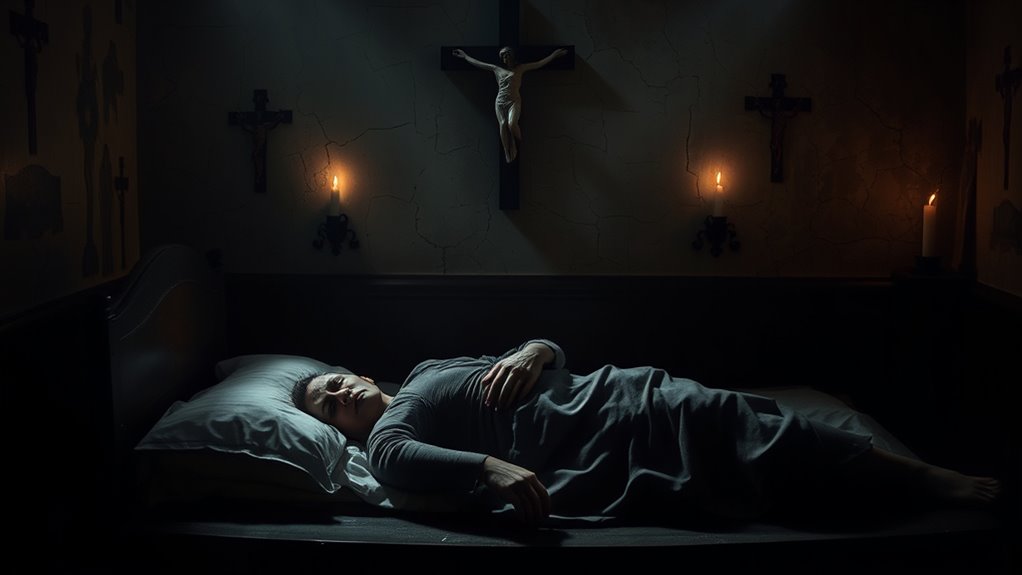
The film “The Exorcism of Emily Rose” draws heavily from the tragic case of Anneliese Michel, whose harrowing story continues to resonate decades later. It presents a fictional trial of Father Richard Moore, inspired by the genuine legal issues surrounding Anneliese’s death after 67 exorcisms due to misdiagnosed epilepsy. The themes raise questions about faith versus medical understanding.
| Aspect | Anneliese Michel | Emily Rose |
|---|---|---|
| Year of Incident | 1976 | 2005 (Film Release) |
| Diagnosis | Temporal Lobe Epilepsy | Demonic Possession |
| Exorcism Count | 67 | Fictional Representation |
| Cultural Background | Devout Catholic | American Interpretation |
| Legal Focus | Parents and Priests | Father Richard Moore |
The Ongoing Legacy of Anneliese Michel

Anneliese Michel’s tragic story continues to spark conversations about the intersection of faith and mental health, especially in light of its influence on popular culture, like the film “The Exorcism of Emily Rose.”
Her case has become a symbol of the dangers that can arise when spiritual beliefs overshadow medical understanding.
- Her grave in Bavaria attracts visitors who leave notes and prayers, viewing Michel as a saintly figure.
- The legal trial that followed her death highlighted the responsibility of the priests who performed the exorcisms.
- Anneliese’s real-life story serves as a cautionary tale about neglecting mental health.
- Recent discussions, like Father John Duffey’s “Lessons Learned,” aim to prevent similar tragedies in the future.
The Intersection of Faith and Mental Health
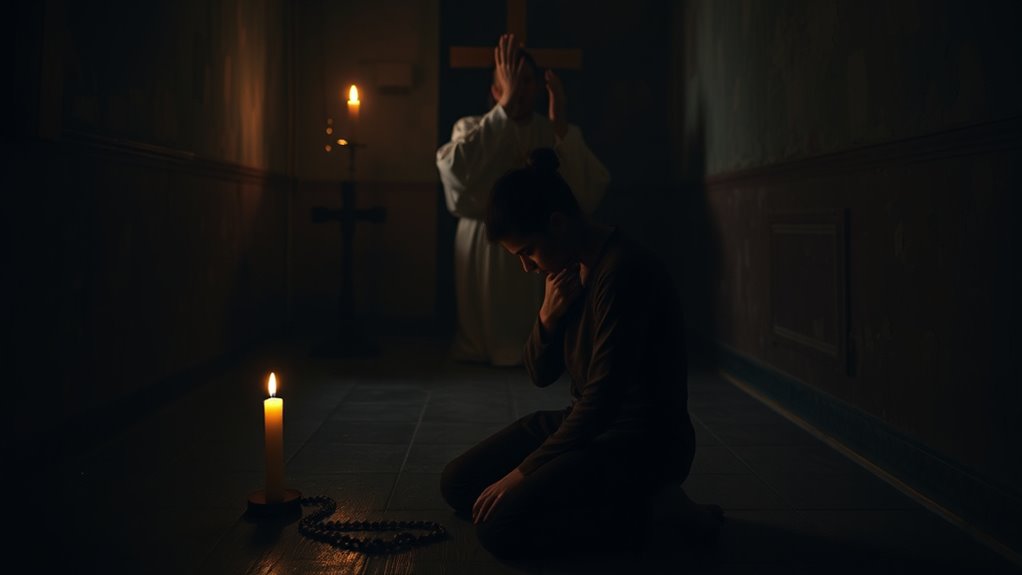
While many people find solace in their faith, it’s vital to recognize how it can sometimes clash with mental health needs. Anneliese Michel’s tragic story starkly highlights this intersection.
Diagnosed with temporal lobe epilepsy, her severe psychiatric symptoms were misinterpreted as demonic possession, leading to 67 exorcisms instead of proper medical treatment. This neglect contributed to her death, emphasizing the dangers of ignoring mental health in favor of faith-based practices.
Anneliese Michel’s tragic story highlights the peril of prioritizing faith over mental health, resulting in devastating consequences.
Her behaviors, like self-harm and hyperreligiosity, signal severe mental illness rather than possession. The legal trial ultimately concluded that Anneliese was mentally ill, not possessed.
Her case serves as a reminder that integrating preventive care with spiritual beliefs is vital to prevent similar tragedies in the future.
Lessons Learned From Anneliese Michel’s Tragic Story

Recognizing the profound impact of Anneliese Michel’s story can lead to valuable insights into the intersection of faith and mental health.
Here are some lessons learned from her tragic case:
- Understand the importance of distinguishing mental illness from spiritual possession.
- Acknowledge that prolonged exorcism sessions without medical intervention can have dire consequences.
- Recognize the legal implications of negligent homicide in cases where faith overrides medical care.
- Advocate for standardized evaluations of possession claims, integrating psychological and medical assessments.
Anneliese’s story serves as a cautionary tale, highlighting the necessity of seeking appropriate medical treatment for signs of mental illness.
Frequently Asked Questions
Was Anneliese Michel Possessed or Mentally Ill?
You might wonder whether Anneliese Michel was truly possessed or suffering from mental illness.
Evidence suggests she struggled with severe psychiatric conditions, such as temporal lobe epilepsy and psychosis, which can lead to symptoms resembling possession.
Her extreme behaviors, including self-harm, seem more aligned with her mental health issues than any supernatural influence.
Ultimately, it appears her tragic situation stemmed from a misunderstanding of her illness rather than genuine demonic possession.
Was the Exorcism Based on a True Story?
Yes, the exorcism was based on a true story.
It involved a young woman who underwent numerous exorcisms, believing she was possessed. Despite her medical issues, her family and priests sought spiritual intervention instead of proper treatment.
This tragic case highlights the clash between faith and mental health, leading to severe consequences.
You can explore the implications of this story further by examining how it reflects societal attitudes toward mental illness and spiritual beliefs.
Is the Story of Anneliese Michel True?
You might wonder if the story of Anneliese Michel is true. It’s a tale of suffering, faith, and tragedy.
It’s about a young woman battling severe mental health issues, a struggle that led to her undergoing multiple exorcisms.
You’ll find that her experience raises important questions about the intersection of belief and mental illness.
While her story is indeed based on real events, interpretations vary widely, leaving many to ponder its true nature.
Is the Movie Exorcism of Emily Rose Based on a True Story?
Yes, the movie “The Exorcism of Emily Rose” is based on a true story.
It’s inspired by the real-life case of Anneliese Michel, who underwent numerous exorcisms and tragically died at a young age.
While the film takes creative liberties, it reflects themes of faith and the struggle between religious beliefs and medical understanding.
You’ll notice that it captures the complex emotions surrounding the events, making it a compelling blend of horror and courtroom drama.
Conclusion
Anneliese Michel’s tragic story serves as a powerful reminder of the delicate balance between faith and mental health. As you reflect on her life and the harrowing events that unfolded, you might wonder: could her suffering have been alleviated with a different approach? The legacy of Anneliese prompts us to contemplate how society treats those grappling with mental health issues, urging a more compassionate understanding that transcends fear and superstition. Her story remains a cautionary tale for us all.
